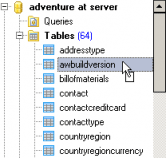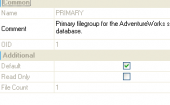MS SQL Maestro online Help
| Prev | Return to chapter overview | Next |
Create Rule Wizard
New rules are created within Create Rule Wizard. In order to run the wizard you should either
| • | select the Object | Create Database Object... main menu item; |
| • | select the Rule icon in the Create Database Object dialog |
or
| • | select the Rules list or any object from that list in the explorer tree; |
| • | select the Create New Rule... item from the popup menu |
or
| • | open the schema in Schema Editor and the Rules tab there; |
| • | press the Insert key or select the Create New Rule... item from the popup menu (alternatively, you may use the corresponding link of the Navigation Bar). |
To create a new rule with the same properties as one of the existing rules has:
| • | select the Object | Duplicate Database Object... main menu item; |
| • | follow the instructions of Duplicate Object Wizard. |
The basic principles of Create Object Wizards in MS SQL Maestro are explained in a separate topic. Below you will find a description of wizard steps that are unique for the current object.
To add a new rule, specify a Comment to the rule and the rule Condition. As a condition you can use any expression valid in a WHERE clause and which can include elements such as arithmetic operators, relational operators, and predicates (for example, IN, LIKE, BETWEEN).
A rule cannot reference columns or other database objects. Built-in functions that do not reference database objects can be included. User-defined functions cannot be used.
The condition must include one variable. The at sign (@) precedes each local variable. The expression refers to the value entered with the UPDATE or INSERT statement. Any name or symbol can be used to represent the value when creating the rule, but the first character must be the at sign (@).
See also: Rule Editor
| Prev | Return to chapter overview | Next |





 Download
Download Buy
Buy
